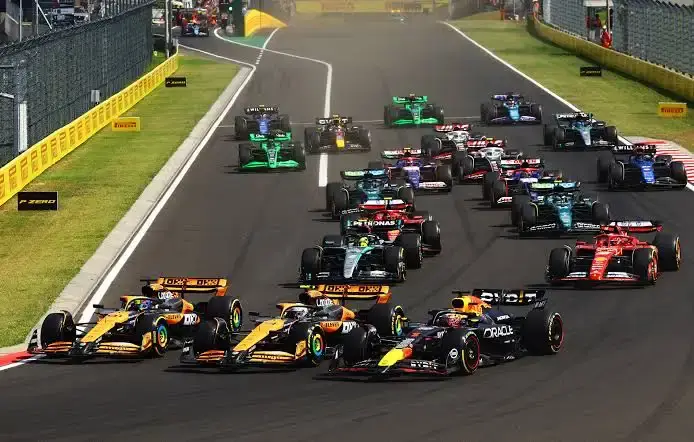F1 Starting Grid: What to Expect
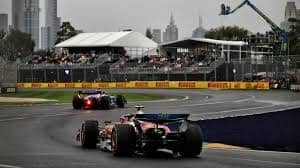
Revving Up for Race Day: Unraveling the Secrets of the F1 Starting Grid
The exhilarating world of Formula 1 is a captivating blend of speed, precision, and intricate strategy that keeps fans on the edge of their seats. Each race unfolds like a complex tapestry, woven from countless variables that include the exceptional skills of the drivers, the carefully crafted strategies of the teams, and the intricate dance that takes place during the qualifying sessions. This high-octane sport has a magnetic appeal, captivating millions of fans around the globe, with each Grand Prix weekend promising its own unique mix of thrills, challenges, and unforgettable moments.
In this article, we will delve deep into the fascinating nuances of the F1 starting grid, shedding light on the various factors that influence the positions of the cars as they line up for the race. We will explore what fans and enthusiasts can expect from the electrifying atmosphere of the Grand Prix weekend, including the anticipation leading up to the race, the strategies employed by teams, and the excitement that unfolds on the track. Join us as we take a closer look at the elements that make Formula 1 a truly remarkable spectacle!
Understanding the Qualifying Sessions
The journey to pole position in Formula 1 is a riveting spectacle that captivates fans and teams alike. The qualifying sessions are meticulously structured into three distinct segments: Q1, Q2, and Q3. Each of these segments plays a crucial role in determining the starting grid for the race. This format creates a thrilling crescendo of excitement as drivers fiercely battle against one another for the best possible starting positions. The qualifying session is far more than just a prelude to the main event; it is an integral part of the entire race weekend. The outcomes of these sessions significantly influence race strategies, as teams must carefully consider tire choices, fuel loads, and track conditions. Ultimately, the qualifying rounds set the stage for Sunday’s showdown, where the stakes are high, and every millisecond counts in the pursuit of victory.
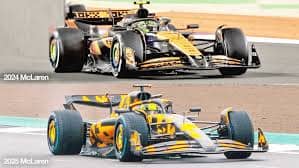
Q1: The Initial Knockout
Q1 is where the action truly begins, marking the start of an exhilarating qualifying session that sets the stage for the race ahead. All drivers hit the track with one goal in mind: to set their fastest lap times possible. The pressure is palpable, as only the top 15 drivers will advance to the next round, making every second on the clock count. As the session unfolds, drivers must skillfully navigate through traffic, avoid costly mistakes, and manage tire wear effectively to secure a coveted top 15 spot.
In the early part of Q1, teams and drivers are focused on finding their rhythm, with the track conditions gradually improving as more rubber is laid down. This process of rubbering in the track can significantly enhance grip levels, allowing drivers to push their cars harder as the session progresses. However, the challenge here is not just about raw speed; it also involves the strategic navigation of traffic and the avoidance of errors that could prematurely end a session.
For many teams, Q1 presents a complex strategic puzzle, requiring them to balance risk and reward carefully. Teams that typically qualify in the lower half of the grid often push hard to make it through to Q2, fully aware that every position counts in the highly competitive environment of Formula 1. The stakes are high, and the tension can lead to dramatic moments, especially when weather conditions change unexpectedly or when incidents occur on track. It’s not uncommon for some big names in the sport to face an early exit, adding to the unpredictability and excitement of Q1.

Q2: Narrowing the Field
As we move into Q2, the competition intensifies significantly. The remaining 15 drivers are now vying for a coveted spot in the top 10, which secures them a place in the final shootout for pole position. Strategy plays a crucial role in this segment, as teams must make critical decisions about whether to prioritize tire conservation or to go all out for aggressive speed. The choices made in Q2 often reflect the broader strategic approach for the race, as the tires used to set the fastest time in this segment are the very ones drivers will start the race on.
Drivers and teams must strike a delicate balance between ensuring a Q3 spot and preserving their race tires for the upcoming battle. This segment often witnesses a variety of strategic gambits, with teams opting for different tire compounds to gain an edge over their competitors. The psychological aspect of Q2 cannot be overlooked, as drivers must maintain their focus and composure under increasing pressure. The stakes are higher, and the tension builds as the clock counts down, making Q2 a true test of not just speed, but also tactical acumen and nerve.
In this phase, drivers are acutely aware of their competitors' performances, and the atmosphere is charged with anticipation. Each lap becomes a critical moment, as drivers push their limits to secure a place in the final qualifying round. The strategies employed during Q2 can have lasting implications, influencing tire choices and race strategies that could ultimately determine the outcome of the race itself.

Q3: The Battle for Pole
Q3 is the ultimate showdown, the climax of the qualifying session. The top 10 drivers unleash their full potential, pushing their machines to the absolute limit in a bid for pole position. The reward for the fastest driver is not just a prime spot on the starting grid; it’s a strategic advantage that can set the tone for the race day ahead. In Q3, the gloves come off, and the true pace of the cars is revealed in a spectacular display of speed and skill.
Each driver aims to extract the maximum performance from their machinery, often running on the lightest fuel loads and freshest tires available. The fight for pole is a breathtaking spectacle, showcasing sheer speed and precision, where even the smallest error can have significant consequences. Drivers must be inch-perfect with every corner, as the margins at the top are razor-thin, and a single miscalculation can mean the difference between starting at the front or being relegated to the back of the pack.
The tension in Q3 is palpable, with teams and fans alike on the edge of their seats, eagerly watching the timing screens as the clock ticks down. Each passing second heightens the drama, as drivers make their final attempts to secure that coveted pole position. The atmosphere is electric, filled with anticipation and excitement, as the best drivers in the world battle it out for supremacy.
Securing pole position is not just about starting at the front; it’s a psychological boost that can impact the entire race weekend. The confidence gained from a strong qualifying performance can carry over into the race, influencing a driver’s mindset and approach. Conversely, a disappointing qualifying result can weigh heavily on a driver’s shoulders, adding pressure as they head into the race.
In conclusion, the qualifying sessions in Formula 1 are a thrilling blend of strategy, skill, and high-stakes competition. From the initial knockout in Q1 to the intense battles in Q2 and the ultimate showdown in Q3, each segment plays a crucial role in determining the starting grid for the race. The drama, the tension, and the excitement of qualifying are what make Formula 1 a captivating spectacle for fans around the world, as they witness the finest drivers and teams push the limits of performance in their quest for glory.
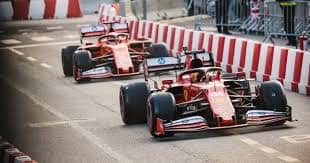
The Importance of the Starting Grid in Racing
The starting grid is far more than just a simple lineup of cars; it serves as a strategic vantage point that significantly influences the dynamics and outcomes of the race. Each position on the grid carries its own set of advantages and challenges, shaping the strategies that teams and drivers will employ as the race unfolds. A front-row start, for instance, offers a clear track ahead, which not only reduces the risk of collisions but also provides the driver with a prime opportunity to dictate the pace of the race from the very beginning. On the other hand, starting further back in the grid demands a combination of strategic overtaking maneuvers and impeccable racecraft to successfully climb through the field and make up lost ground. The grid positions are a direct reflection of the teams’ and drivers’ efforts during the qualifying sessions, setting the stage for the tactical battles that will unfold on race day.

The Pole Position Advantage: A Game-Changer
Securing pole position is akin to holding an ace in a high-stakes game of poker. The driver who starts in pole position enjoys a significant advantage, as they have the benefit of a clear track ahead of them. This allows them to focus on building a lead rather than having to defend their position against competitors right from the start. Historically, pole sitters have demonstrated a higher probability of winning the race, which underscores the critical importance of qualifying performance. When a driver occupies pole position, they can control the pace of the race, conserving vital resources such as tires and fuel while simultaneously keeping a watchful eye on any challenges that may arise from behind.
The psychological edge gained from starting first can also have a profound impact on competitors, often unsettling them and forcing them into a more reactive strategy. This can lead to mistakes or miscalculations, which can be advantageous for the pole sitter. Moreover, being at the front significantly reduces the likelihood of getting caught in the chaotic midfield battles, where incidents and collisions are more common. However, it is important to note that maintaining the lead is not without its challenges; it requires a high level of skill and concentration, as the pressure of being chased can be intense and relentless.

Midfield Dynamics: The Heart of the Action
The midfield battle is where the action often heats up and becomes particularly thrilling. Drivers starting in these positions face the dual challenge of overtaking competitors ahead while simultaneously defending against those who are trying to overtake them from behind. This segment of the grid is a hotbed of strategy, as teams employ various tactics to gain positional advantage over their rivals. The midfield pack is typically closely matched in terms of performance, leading to exciting wheel-to-wheel racing that captivates fans and keeps everyone on the edge of their seats.
In the midfield, strategy and racecraft are paramount. Teams may opt for differing pit stop strategies to leapfrog competitors, taking advantage of the ever-changing dynamics of the race. Drivers need to strike a delicate balance between aggression and caution, knowing when to push for an overtaking opportunity and when to hold back to avoid unnecessary risks. The ability to adapt to changing conditions, whether it be weather changes or tire degradation, and to capitalize on unexpected opportunities is crucial for success in this highly competitive environment.
The midfield is also where unexpected heroes can emerge, with drivers often pulling off daring overtakes and showcasing their talents in ways that can surprise both fans and pundits alike. These moments of brilliance can turn the tide of a race and create memorable highlights that resonate long after the checkered flag has fallen. The excitement of the midfield battles adds an extra layer of intrigue to the race, reminding everyone that while the front may be where the glory is often found, the heart and soul of racing can often be found in the fierce competition that takes place in the midfield.
In conclusion, the starting grid plays a pivotal role in shaping the race, influencing strategies, and determining outcomes. Whether it’s the coveted pole position or the intense battles in the midfield, each aspect of the grid contributes to the thrilling spectacle that is motorsport.

The Rear of the Grid
For drivers positioned at the back of the grid, the race often feels like an uphill battle, fraught with challenges and obstacles. However, this seemingly disadvantageous position also presents unique opportunities for bold strategies and unexpected comebacks that can turn the tide of the race. Teams may choose to implement alternative tire strategies, experimenting with different compounds to gain an edge, or they might take calculated risks based on changing weather conditions, all in an effort to climb the standings and improve their race position. Starting from the rear requires a distinct mindset, as drivers must be mentally prepared to take calculated risks and seize every opportunity that presents itself during the race.
Being at the back of the grid can sometimes prove to be advantageous, particularly in chaotic races where incidents at the front can create unexpected openings and pathways through the field. Drivers starting in these positions often have little to lose, which allows them the freedom to take chances that those competing for the championship might be more hesitant to pursue. The rear of the grid is not just a place of struggle; it is also a showcase of resilience, determination, and skill, with drivers pushing themselves to the limit in an effort to salvage a respectable result against all odds.
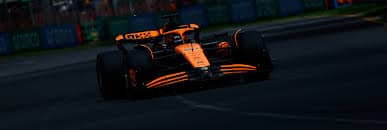
Key Factors Shaping the Starting Grid
Several key elements determine the starting grid, each playing a crucial role in the excitement of a Grand Prix weekend. These include qualifying performance, car setup, and the strategic choices teams make before the race. By understanding these factors, we gain insight into why some teams and drivers perform well while others face challenges, ultimately shaping the weekend's story.
Moreover, external factors like weather conditions, track characteristics, and the mental aspects of racing can greatly influence grid positions. Analyzing these elements allows fans and analysts to appreciate the complexities of motorsport and the delicate balance of strategy and skill that defines each race. The starting grid is not just a lineup; it is a dynamic environment where fortunes can shift in an instant, making every race an exhilarating event.

Track Characteristics
The design of a circuit significantly impacts qualifying results. Tracks with long straights tend to favor cars with strong straight-line speed, while twisty circuits benefit those with high downforce and nimble handling. Each track poses its own set of challenges, from the high-speed turns of Monza to the narrow streets of Monaco, requiring teams to fine-tune their setups to meet the specific demands of each venue.

Aerodynamic efficiency, mechanical grip, and power unit performance are crucial factors that determine which teams gain an advantage. Some circuits are particularly challenging for overtaking, making a strong qualifying position even more critical. Additionally, track characteristics can affect tire wear and fuel consumption, adding another layer of strategy for the weekend.
Weather Conditions
Weather can be unpredictable, transforming qualifying sessions into a matter of chance. Rain can level the playing field, allowing lower-budget teams the opportunity to compete for top positions. Wet conditions demand exceptional skill, as drivers must navigate slippery surfaces and reduced visibility. Teams closely monitor weather forecasts, understanding that a sudden downpour can significantly alter the competitive landscape.
 In rainy conditions, driver skill becomes essential. Those who excel at managing slippery tracks often distinguish themselves. Teams must also make prompt decisions regarding tire choices and car setups, as changing conditions can surprise even the most experienced competitors. The unpredictability of weather adds an element of excitement to the weekend, keeping both teams and fans engaged.
In rainy conditions, driver skill becomes essential. Those who excel at managing slippery tracks often distinguish themselves. Teams must also make prompt decisions regarding tire choices and car setups, as changing conditions can surprise even the most experienced competitors. The unpredictability of weather adds an element of excitement to the weekend, keeping both teams and fans engaged.
Team Strategies
Making strategic choices regarding tire selection, fuel loads, and timing is absolutely essential for securing a strong grid position in Formula 1 racing . Teams meticulously analyze a wealth of data and run complex simulations to develop the ideal qualifying strategy, carefully balancing the need for speed with effective resource management. The timing of a driver’s run is crucial; drivers aim to hit the track under the most favorable conditions, which means avoiding traffic and taking full advantage of the best possible track state. In the fast-paced world of F1, teams frequently face split-second decisions that can make or break their qualifying performance.

They must be agile, responding quickly to competitors' moves and adapting to changing track conditions. The complexity of modern F1 cars means that even minor adjustments in setup or strategy can have a significant impact on overall performance. Therefore, effective collaboration between drivers and engineers is essential, with clear and concise communication playing a key role in executing a perfect qualifying lap. Every detail matters, and the synergy between team members can often be the difference between success and failure.
Notable Performances and Surprises
Formula 1 is filled with captivating stories of underdogs exceeding expectations and established drivers facing unexpected challenges. These unpredictable moments are what keep fans on the edge of their seats, eagerly awaiting the next surprise that could unfold during a race weekend. The grid often showcases dramatic narratives, with unexpected performances and setbacks that can reshape the entire weekend's story. From rookie drivers clinching pole positions to seasoned champions struggling to find their rhythm, the unpredictability of F1 adds an extra layer of excitement. Each race is a new opportunity for teams to showcase their skills and strategies, making every qualifying session a thrilling spectacle for fans and participants alike. The ever-changing dynamics of the sport ensure that no two weekends are ever the same, keeping the excitement alive and the competition fierce.

Breakthrough Performances
Every season, certain drivers step up, delivering remarkable performances that challenge expectations. Whether it’s a rookie making their mark or a seasoned veteran reclaiming their former glory, these stories add depth to the F1 narrative. Breakthrough performances often come from unexpected places, as drivers take advantage of changing conditions or clever strategies to move up the grid. 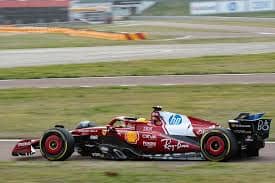
Fans and teams celebrate these achievements, recognizing the talent and potential within the sport. Such performances can be pivotal in a driver’s career, boosting their confidence and setting the stage for future success. The ability to excel under pressure is a defining trait of exceptional drivers, and these moments highlight their skill and determination.
Unexpected Setbacks
Conversely, even the most skilled drivers may face setbacks. Mechanical failures, strategic miscalculations, or unforeseen incidents can disrupt a promising qualifying run, adding an element of drama to the sport. Setbacks are an inherent aspect of racing, challenging the resilience and adaptability of both teams and drivers.It is essential to recover from these setbacks, as teams often dedicate significant effort to resolve issues and salvage their results. Such challenges can also serve as valuable learning opportunities, contributing to the long-term development of a team. The unpredictability of Formula 1 ensures that no outcome is assured, maintaining a high level of competition and ongoing drama.
Conclusion: The Thrill of the Grid
-
The F1 starting grid encapsulates the complexities and excitement that define Formula 1 racing. From the strategic battles of qualifying to the adrenaline-fueled race day, each element contributes to the captivating spectacle that fans around the world eagerly anticipate. The grid is a dynamic landscape, reflecting the ebb and flow of competition and the relentless pursuit of excellence.
-
As we look ahead to the next Grand Prix, the starting grid remains a focal point of intrigue, promising a weekend filled with high-octane action and unforgettable moments. In the ever-evolving world of Formula 1, the starting grid is more than just a lineup; it's the stage where the drama of racing unfolds, offering endless possibilities and the promise of thrilling competition. Whether it's the battle for pole position, midfield skirmishes, or daring charges from the back, the grid is where each race's story begins, setting the stage for the exhilarating spectacle that is Formula 1.
-
